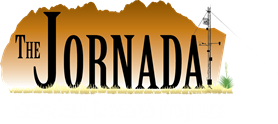| Title | Feast or famine: Climate impacts on agriculture using crop insurance data |
| Publication Type | Conference Paper |
| Year of Publication | 2019 |
| Authors | Reyes J.T., Elias EH |
| Conference Name | American Geophysical Union |
| Date Published | 12/2019 |
| Conference Location | San Francisco, California |
| ARIS Log Number | 378948 |
| Abstract | The federal crop insurance program has paid out over $120 billion between 1989 and 2017 due to weather and climate-driven events. Operated by the U.S. Department of Agriculture Risk Management Agency, the taxpayer-subsidized program is an important financial safety net to our farmers, ranchers, and landowners. However, climate change is expected to increase programmatic costs, decrease agricultural production, and threaten rural communities’ economic livelihoods and wellbeing. Our objectives are to: (1) present methods to analyze and visualize long-term crop insurance losses, (2) report on significant patterns and trends of crop loss, and (3) share an online tool used to engage stakeholders using these data to enhance their risk management decision making. |


